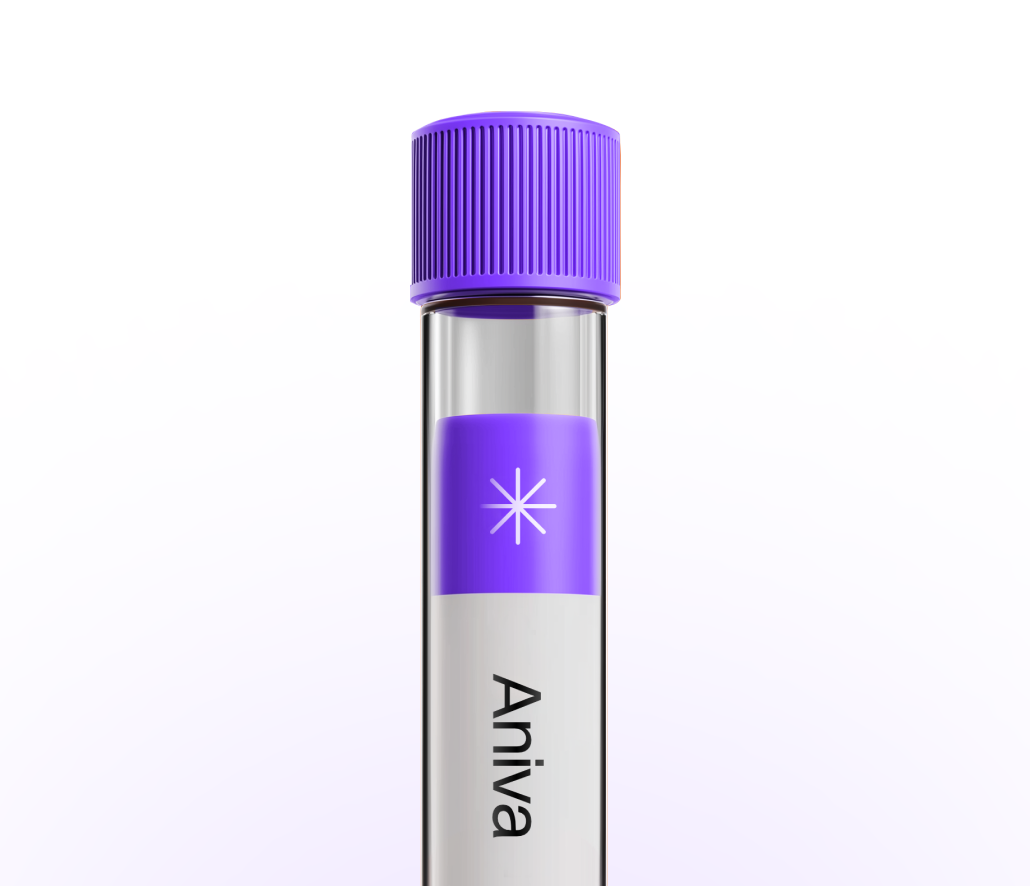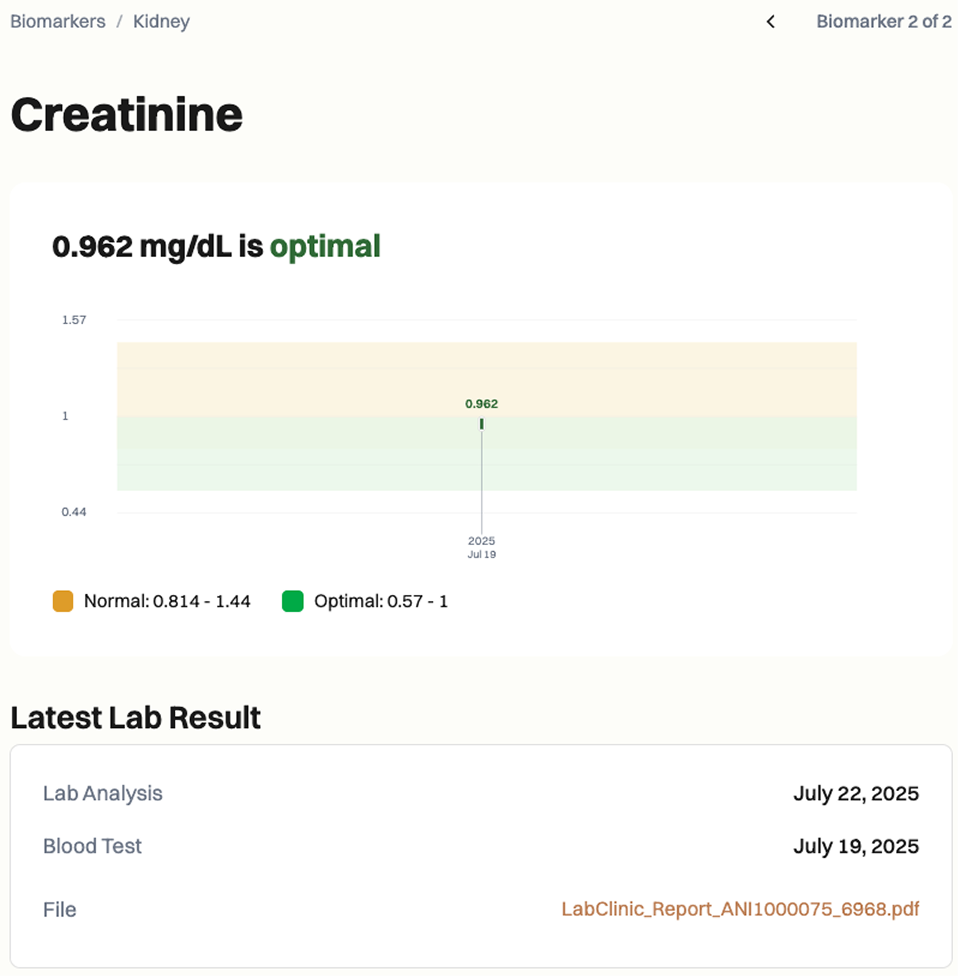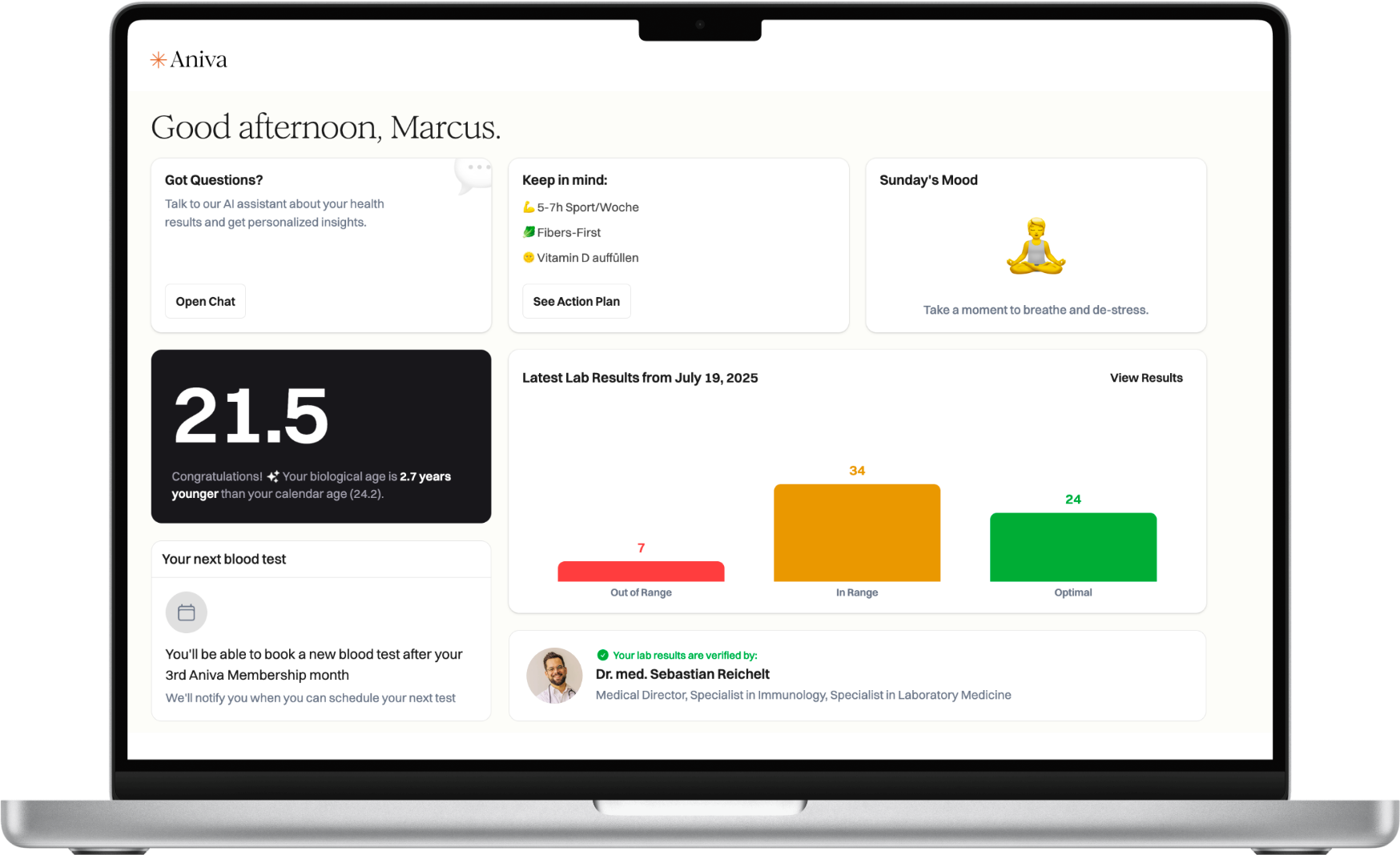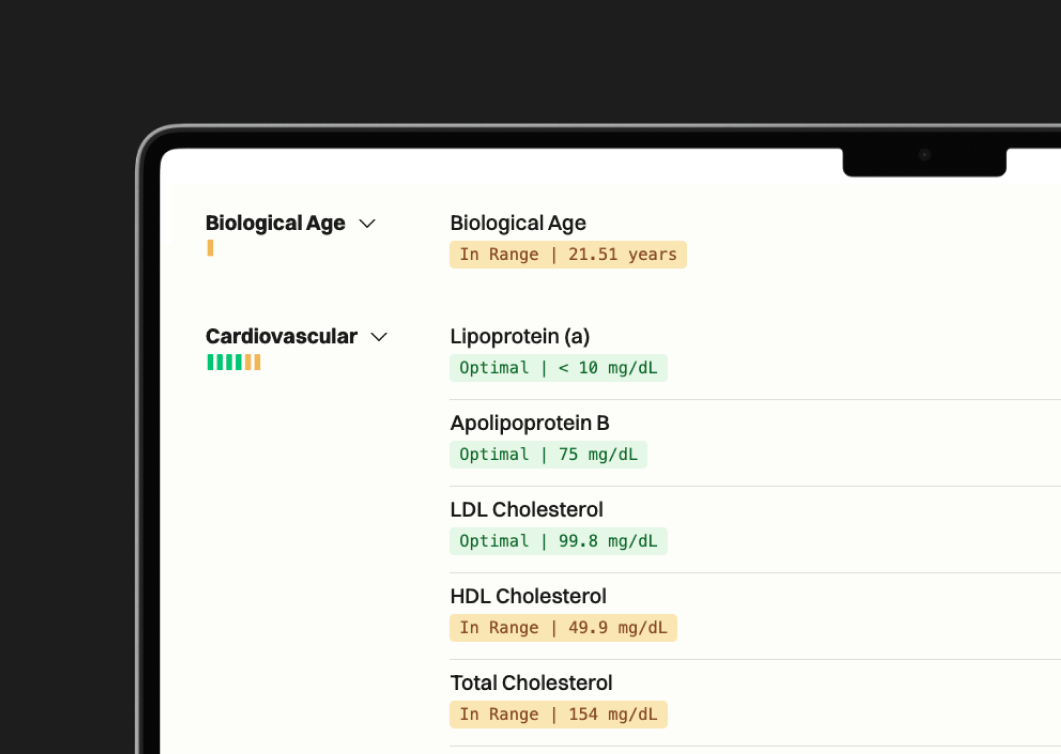MPV shows the average size of your platelets and adds context to your platelet count.
Securely stored in EU
Cancel anytime
Test 100+ biomarkers

Less than 5 minutes waiting time. One
simple test at one of our 20+ locations.
Get your lab reports within one week.
Accessible on our app and per PDF.
All your health records stored
in a single, convenient place.

Clinicians often order MPV with a complete blood count to add clarity to platelet results. It helps show whether platelets are mostly young or older, which can guide follow-up. This context is useful when platelet counts are low or high, or bruising or bleeding is unexplained. You can test this marker with Aniva across Germany and Finland.
Clinicians often order MPV with a complete blood count to add clarity to platelet results. It helps show whether platelets are mostly young or older, which can guide follow-up. This context is useful when platelet counts are low or high, or bruising or bleeding is unexplained. You can test this marker with Aniva across Germany and Finland.
High: Larger average platelet size. This may appear when your body is releasing more new platelets (for example, after platelet loss) or during inflammation. If elevated, consider rechecking—MPV can rise if the sample sat too long before analysis.
Low: Smaller average platelet size. This may occur when fewer new platelets are released or when platelets are older. Review alongside platelet count and symptoms for context. Trends over time matter most. MPV is not guideline-endorsed; no standardized cutoffs.



Common factors that can skew MPV include delayed processing after the draw (platelets can swell in EDTA), sample clots, extreme temperatures, recent strenuous exercise, dehydration, alcohol or tobacco, acute illness or inflammation, pregnancy, and medicines that affect platelets (such as aspirin or other antiplatelet drugs). Different analyzers use different methods, so values and reference ranges can vary by lab.
Special situations: very low platelet counts, recent transfusion, chemotherapy, or suspected platelet disorders—confirm or interpret results with your clinician and the lab.
What does an MPV result mean? It shows the average size of your platelets. Higher suggests larger, younger platelets; lower suggests smaller, older ones. Read it with the platelet count.
What can affect MPV results? Delayed processing, temperature, lab method, sample clots, medicines like aspirin, recent exercise, illness, or pregnancy can shift results.
Do I need to fast for MPV? No. MPV does not require fasting.
How often should I test MPV? It is usually checked whenever a CBC is ordered or when tracking platelet changes. Your clinician will guide timing.
How long do results take? Most labs report MPV within 1–2 working days.
What should I discuss with my clinician? Share bruising, bleeding, heavy periods, and all medicines or supplements. Ask how MPV trends with your platelet count and other CBC results.



One annual blood test (100+ biomarkers)
Clinician-reviewed insights
Personalized action plan
Access to our AI Concierge
Access to curated products


63%
44%
70%